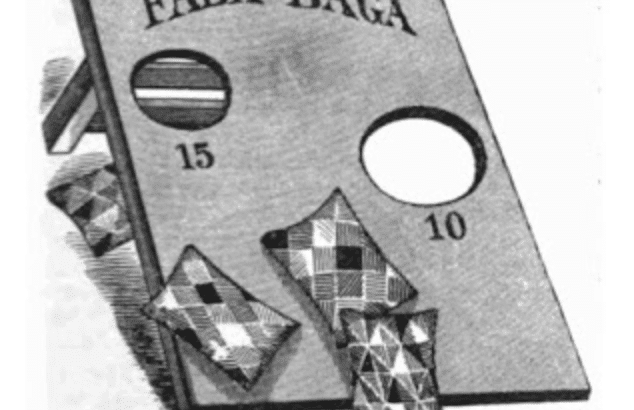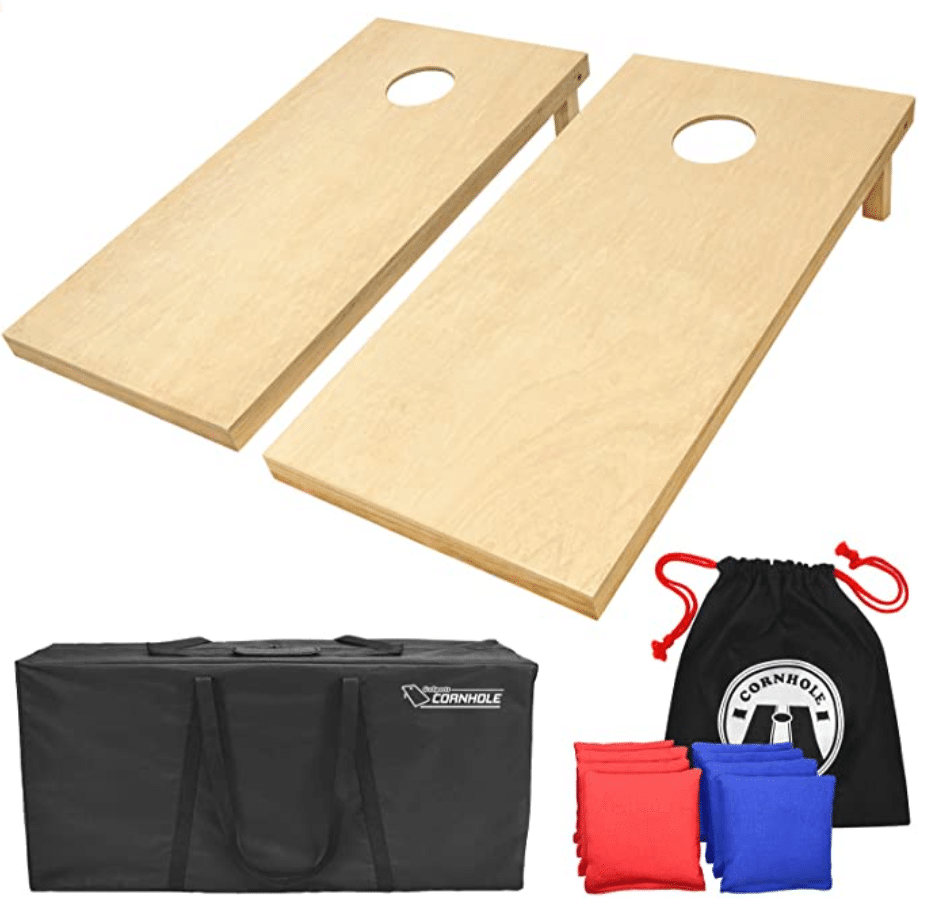The history of cornhole is anything but straight forward. There are many different legends that abound all allegedly offering the truth behind how cornhole came into existence. I’ve looked into some of the most popular theories and while I’ve found some interesting stories, I’ve only found one well-documented history of cornhole. Here’s how the story goes…
Get a quality cornhole board set right now!
Check out my #1 recommendation for a quality cornhole board set that is perfect for beginners.
The Blackhawk tribe in Illinois
Many people attribute the origin of the cornhole game to Native Americans living in the Midwest of the US. They weren’t exactly playing with duck cloth bags filled with whole kernel corn though. Legend has it that the Blackhawk tribe in Illinois played a very similar game where they filled the bladder of pigs with dried beans and tossed them around for entertainment.
As awesome as that history sounds and as much as I’d like to imagine Native Americans tossing around pig bladders stuffed with beans for fun, I haven’t been able to find a single source on solidifying that to the formation of cornhole. It seems everybody is just repeating the same legend but not pointing to any historical documents or sources, so Im not sure we can substantiate that legend.
Given that the Blackhawk tribe is associated with Illinois it’s at least possible that they are partially responsible for the region’s connection to the game, though I personally think the connection is very tenuous at best.

14th Century Germany
Some people claim that in the 14th century a German farmer named Matthias Kueperman, a Bavarian cabinetmaker, invented the game. Legend has it that Kueperman witnessed some kids playing a game where they threw rocks into a hole in the ground.
Kueperman thought the game possessed too much danger to the kids since these large rocks would ricochet up and strike them so he opted to make a safer version of the game. He reportedly utilized old furniture to create a board and made a hole in it for the kids to throw their rocks (and some even say he crafted bean bags).
It’s then thought that German immigrants brought the game with them to the US when they arrived likely in the 1800s. Cincinnati actually has Germanic roots from the many immigrants that resided there in the late 1800s and early 1900s and so that lends some support that the game was introduced to the US from Germany.
The problem with this story is I can’t find any historical evidence to back it up.
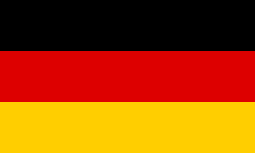
Kentucky
There’s also a camp of people who insist that it was Kentucky who originated cornhole. It’s argued that cornhole surfaced somewhere in the hills of Kentucky during the late 19th Century.
It’s not clear to me that the game originated here but it’s clear that the game was very popular in the region during this time. What surprised me is that seems to have been more popular with elites at the time.
Take a look at these sources which were put together by the Early Sports and Pop Culture History Blog (major shout out for the great resources).
The latest fad is the game of “Bean Bags,” which is now prevailing alarmingly. It is an importation from Long Branch and Saratoga, where it had a successful run, taking the place of “progressive euchre,” “blind man’s buff,” etc. A polished board, four feet by two, is set at an angle of twenty degrees. A hole four inches in diameter is cut in the upper end. . . . The game is having a big run in the upper-tendom, and is said to be very amusing and entertaining. . . . Louisville Post.
Semi-Weekly Interior Journal (Stanford, Kentucky), April 5, 1887, page 4.
Bean-bag parties are all the rage in Washington, and society belles are becoming very expert at the new game. . . . Many young society ladies have become quite expert at pitching the little bags, and show excellent judgment and skill in accurately gauging the distance and the strength necessary to be exerted. . . . The sport is full of interest and bean-bag boards are now found in every household which expects to be considered up to the times. – Washington Post.
Murfreesboro Index (North Carolina), December 16, 1887, page 4.
So it’s clear that the game was popular on the East Coast during the late 19th Century — I’m jut not sure that it originated there, as it could have been transported in from the elsewhere. For the record, the game was also popular in the Midwest during this time:
A favorite amusement in the country especially at church socials, is faba baga or bean bag.
Rock Island Daily Argus (Illinois), February 27, 1891, page 5.
For what’s worth, Kentucky is where the current cornhole world championships are held so some consider that to lend credence to Kentucky’s connection to cornhole but I think the connection to the origin of cornhole is very tenuous once again.
Heyliger de Windt: The creator of cornhole?
Heyliger de Windt was a Harvard grad with close ties to at least five US Presidents and is probably the person that we can most confidently attribute the modern game of cornhole to based on actual evidence.
His 1883 patent for his version “Parlor Quoits” had a lot of similarities to the modern game of cornhole but it included a square hole instead of a round one. Quoits is a game very similar to horseshoes where you throw discs at a spike or peg and parlor quoits was an indoor version of this game where one tossed rings onto spikes attached to a board. Palor quoits seems to have been played in a number of different variations, though.
De Windt wanted to create his own version of quoit in an indoor setting and his 1883 patent was reportedly the first to use bean-bags along with a slanted board with a hole as the target. De Windt ‘s idea to incorporate bean bags didn’t come out of thin air — bean bags had grown into a craze during that time and many different exercises and games began incorporating bean bags well before the De Windt’s creation.
The game De Windt created grew in popularity and he eventually licensed/sold the rights to his patent to a Massachusetts toy manufacturer that marketed the game in the late 1880s as “Faba Baga” which had two different-sized holes in the boards. The game became wildly popular in the 1880s.
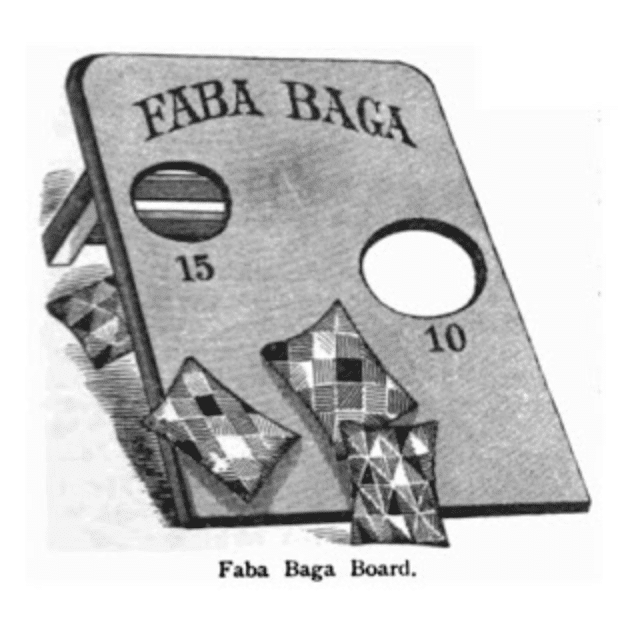
So this was a game that was essentially the same as cornhole just with slightly different scoring. But it still makes some wonder what could have inspired Heyliger de Windt? Was he privy to the games played in Germany for centuries? Or did he simply envision an alternative to quoits?
I think given the popularity of bean bags at the time it’s easy to see how someone could have thought to incorporate bean bags into a modified version of quoits and so I think Heyliger de Windt is the inventor of cornhole as we know it.
It seems that during the early part of the 20th century, there were not a lot of people buzzing about cornhole and the buzz around the game eventually died down but not completely.
ESPCH writes that:
Since its inception, it has been regularly described in educational, exercise and recreational books, manuals and texts, as a recommended game for picnics, parties and schools. Over the years, the game has gone by numerous names, such as Bag Board, Dummy Boards, Dadhole, Doghouse, Baggo, Bags, Corn Toss, Bean Bag, Bean Toss, Soft Horseshoes, and Indiana Horseshoes, to name a few.
So people were still playing the game but it fell out of pop culture until it re-emerged in the 1970s.
Get a quality cornhole board set right now!
Check out my #1 recommendation for a quality cornhole board set that is perfect for beginners.
The modern history of cornhole
The modern game of cornhole was probably spread after an article on how to make the boards was published in Popular Mechanics magazine in September 1974. The game was initially a huge hit in Chicago, Illinois, and the Northwest region of Indiana from the late 1970s to the early 1980s.
Cincinnati is also where the game is known to have picked up and that’s where the modern resurgence of the game kicked off. So Cincinnati might not have created cornhole but they might be the place most responsible for its popularity today.
Eventually the popularity of the sport exploded across the US and its presence became popular at tailgate events throughout the Midwest and all across the US. In 2011 the New York Times even wrote that the game was ‘’sweeping the Northeast.’’
There’s even official cornhole organizations like the ACO and the ACA and ESPN even broadcasts the national championship.
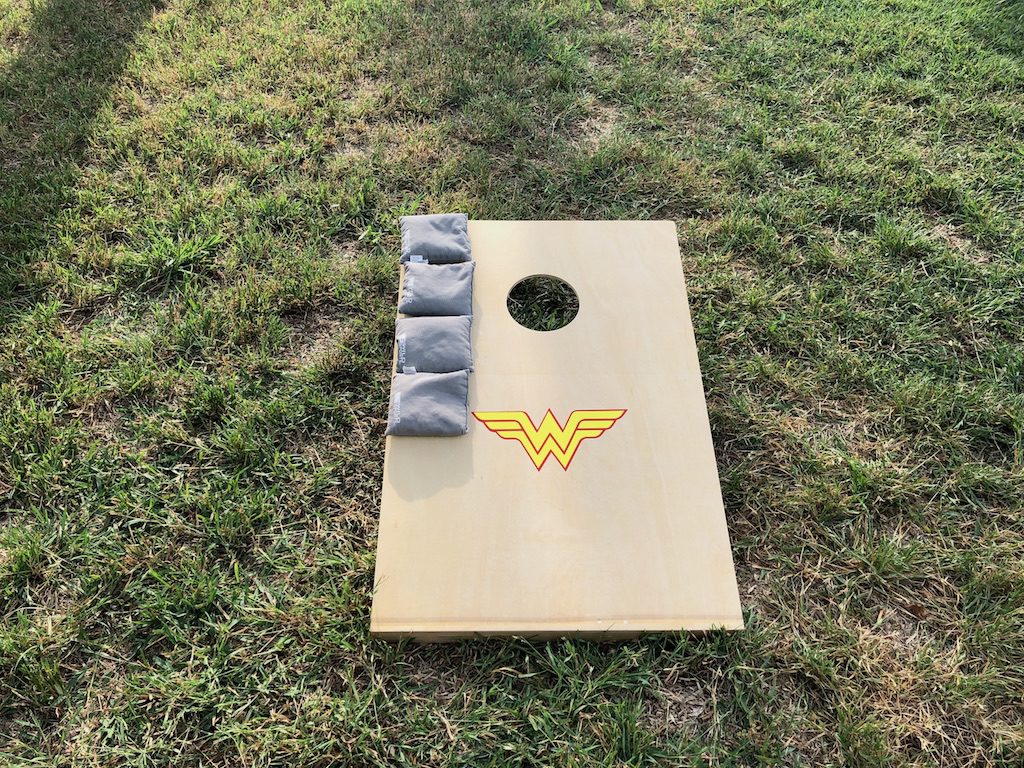
Why is this game so popular today?
I think cornhole is popular because of a few factors.
Anybody can play it
It doesn’t mater your age or your level of athleticism, your gender, height, age, or weight — just about anybody can toss a bean bag and hope for the best.
The scoring system for cornhole is also simple so just about anybody can learn how that works. So this game is playable by just about anybody.
It’s portable
You can set up a cornhole court just about anywhere. Unlike games like horseshoes that require installing posts, you don’t have to install anything — you just gotta put out two boards and get to tossing. It’s that simple.
It’s fun
Cornhole is a just a fun game. It feels great to sink a cornhole just like it feels good to sink a three pointer or a long putt in golf. But there’s also the competitive aspect to it. It’s enough of a sport that you can get very competitive in your matches and this underlying competitiveness is one reason why it also fits so well into tailgating.
It can be played with nice buzz
Some might argue that cornhole should be played with a nice buzz and that skill levels go up with just the right amount of alcohol. I’m not sure about that but cornhole is a game that can still be enjoyed while having a nice drink. And there are many cornhole drinking games that can be enjoyed while having a good drink.
This is yet another reason why cornhole is popular with tailgates.
All of these are major reasons why cornhole has grown in popularity over recent years and why I think it’s going to stay around as a staple at parties and events.
Final word on the history of cornhole
While we may never know exactly where to trace the game of cornhole I think it’s likely that the game was invented in the 1880s by a Harvard grad who though of a cool way to use bean bags to play his own version of quiots. Regardless of whether or not other legends contain the truth we’re looking for, at least we can rest assured that we’ll be able to enjoy it well into the future.

